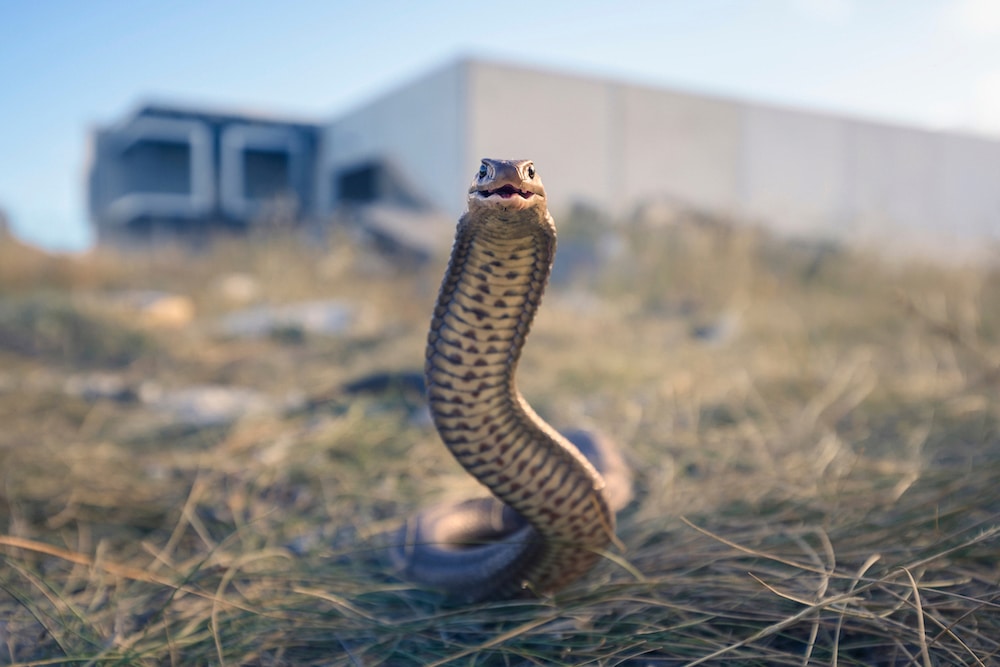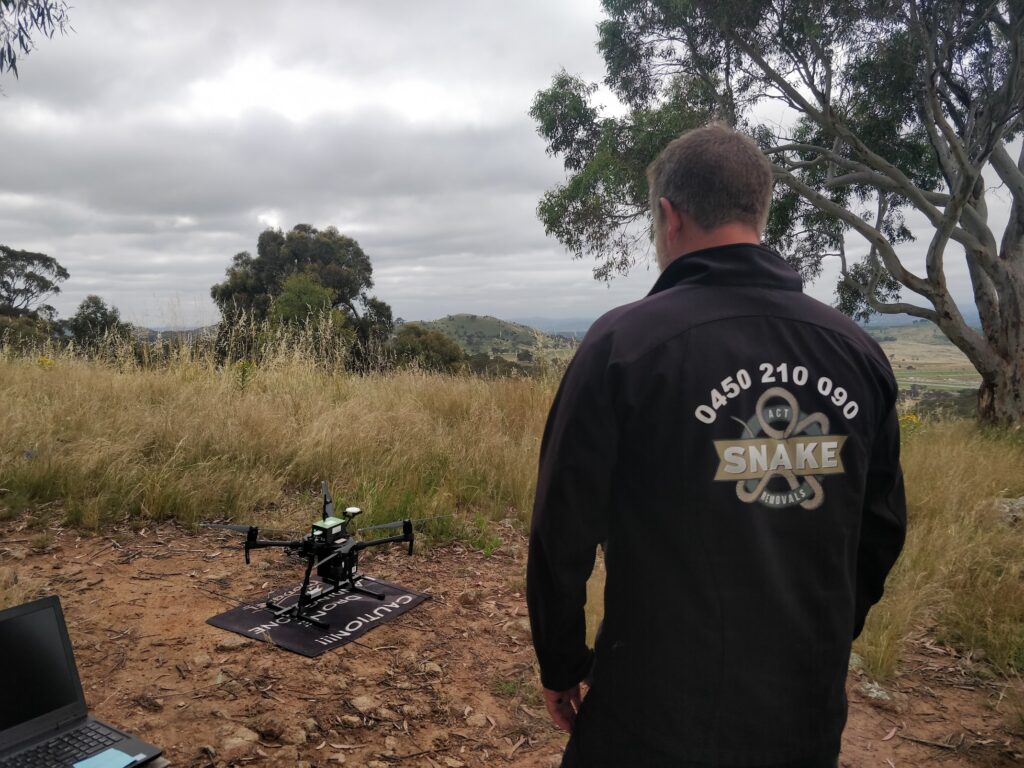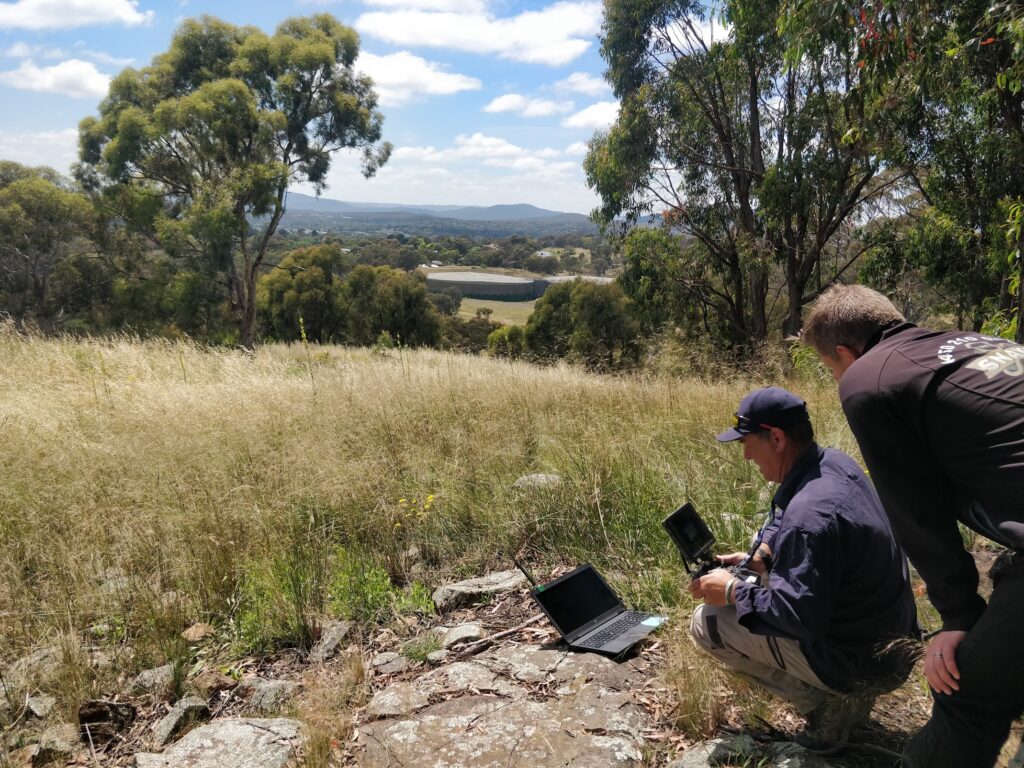Eastern Brown Snake x ACT SNAKE REMOVALS
[MONITORING & MANAGEMENT]
World-first tracking of snakes using drone radio-telemetry
Eastern Brown Snakes are a common, yet highly venomous species that live in open grassy woodlands of Eastern Australia, as well as adjacent residential areas. This species is responsible for the largest number of deaths from snakebite in Australia, with 54% of all snakebite deaths occurring close to the home. So better understanding and managing human-wildlife conflicts where these snakes venture into the backyards of suburban homes is critically important. Given these snakes are also protected native species, where these conflicts occur, they are often captured by experienced snake handlers, such as Associate Professor Gavin Smith, from the Australian National University and ACT Snake Removals, and released back into the wild. However, the movements and survival of these snakes following release, and the effectiveness of translocation as a management measure remain largely unknown. There is also very little known about the movements of wild Eastern Brown Snakes, to compare to those of the translocated animals and for more general management of this species.
Therefore, Associate Professor Gavin Smith established a research project to track movements of both wild and relocated Eastern Brown Snakes between suburban and nature reserve areas in Canberra, Australia. With expertise in both sociology and ecology, he aims to shed new light on the movements of these cryptic species to help improve the understanding and management of them, as well as to educate and raise awareness in the local community to reduce the risks of getting bitten.
However, the hardest thing about studying and tracking movements of these snakes using manual techniques is the extensive amount of effort needed to find the snakes when their tag signals are difficult to detect from on the ground. This typically results in teams of people walking around holding up hand-held antennas in the air for hours on end while traipsing over rocky and mountainous terrain hoping to pick up a tag signal.
“The radio transmitter tags are implanted in the snake’s bodies since there is no other way to attach their tags, but this means that the signals from the tags are weak and very difficult to detect when tracking on the ground” said Assoc. Prof. Smith.
“We can also only track one animal at a time, so we have to do the same thing many times over to find all the snakes. Given snakes can move in any direction and the tag signals are weak, it can easily take 12 hours on foot to find a single lost animal, if it can be found at all” he said.
The effort required to track them all also limits the number of animals that can be studied, the amount of data that can be collected and the insights that can be gained throughout the multi-year project.
Therefore Assoc. Prof. Smith asked Wildlife Drones to help search for some of his missing snakes, resulting in the world’s first drone radio-telemetry project tracking snake movements.
By tracking from up high, the likelihood of detecting tag signals is increased due to improved line of sight with the tagged animals, rather than the signals being blocked by trees, rocks and buildings on the ground. Wildlife Drones’ technology can also track up to 40 uniquely tagged animals simultaneously, saving a huge amount of time and effort for field teams.
“I’ve been super impressed with Wildlife Drones’ technology. Being able to very quickly collect data over vast areas in real time from the drone, which then leads us directly to where the snakes are, is really fantastic” said Assoc. Prof. Smith.
Assoc. Prof. Smith added “It’s been amazing for me to see how easily the drone can move across different landscapes, and that the tags can be detected from further away than was previously possible, so it has been just incredible to see, and it revolutionises my research moving forward.”
I’ve been super impressed with Wildlife Drones’ technology. Being able to very quickly collect data over vast areas in real time from the drone, which then leads us directly to where the snakes are, is really fantastic. It’s been amazing for me to see how easily the drone can move and track snakes across different landscapes. Being able to detect tags from further away than was previously possible, has been just incredible to see. Wildlife Drones’ technology revolutionises how I can conduct my research moving forward.
Gavin Smith
Associate Professor & ACT Snake Removals



Categories: #ThreatenedSpecies

